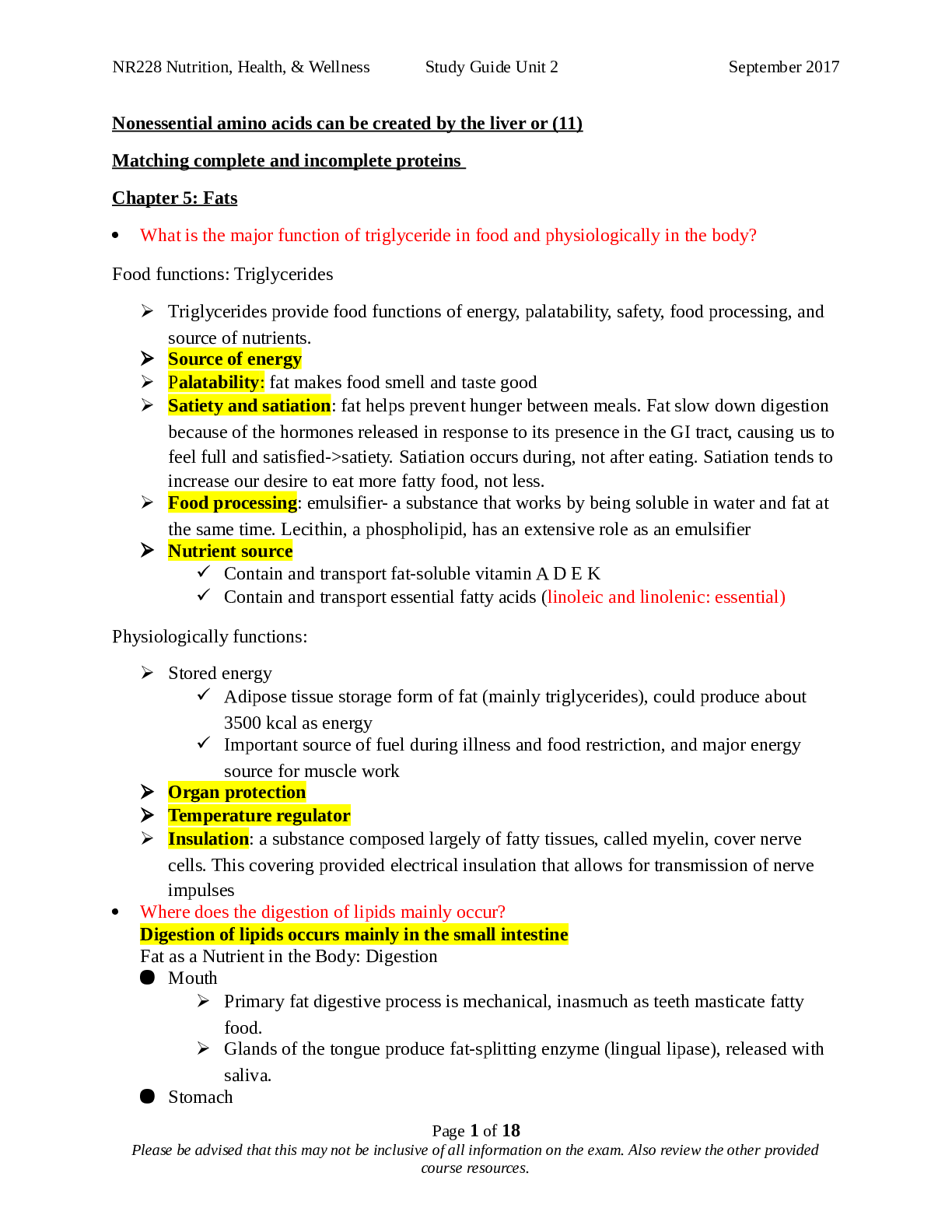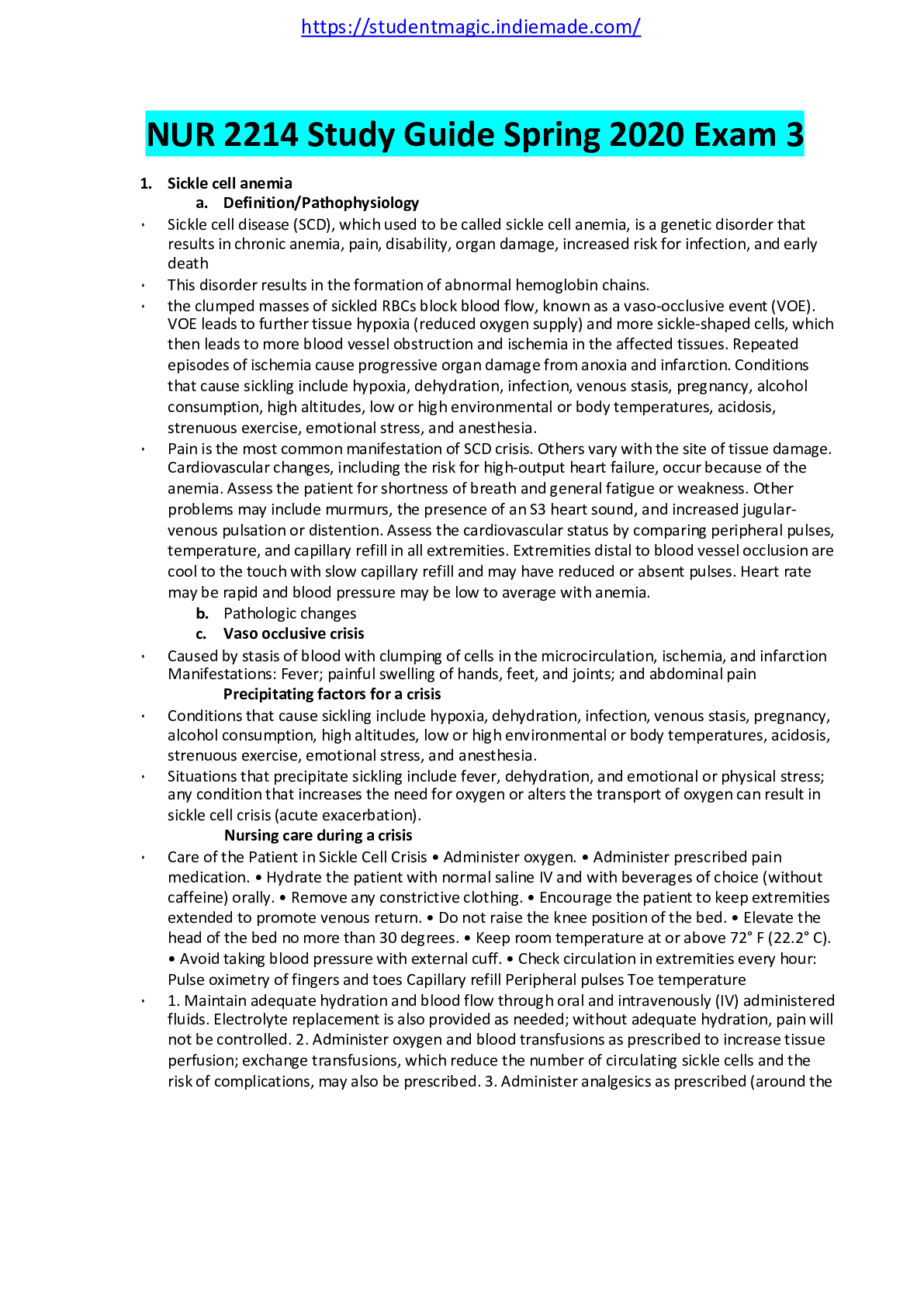*NURSING > STUDY GUIDE > RN NCLEX | QUESTIONS & ANSWERS/ RATIONALES, LATEST | NUR 101 | NCSBN TEST BANK - for the NCLEX-RN & (All)
RN NCLEX | QUESTIONS & ANSWERS/ RATIONALES, LATEST | NUR 101 | NCSBN TEST BANK - for the NCLEX-RN & NCLEX-PN.
Document Content and Description Below
NCLEX RATIONALES 1. Cardiac dysrhythmias are a risk for clients taking haloperidol and other conventional antipsychotic medications. The client should be monitored for changes in vital signs, tachyc... ardia, and ECG changes, including prolonged QT interval, while taking haloperidol. There is a risk for cardiac arrest due to torsades de pointes. 2. Body weight is the most reliable indicator of fluid loss for infants and young children. 3. Measles, mumps rubella (MMR) is correct. A 1-year-old child should receive the first of two doses of the MMR vaccine. Diphtheria, tetanus and acellular pertussis (DTaP) is incorrect. By 1 year of age, the child should have already received three doses of DTaP: at 2 months, 4 months, and 6 months. The child should receive a fourth dose at 15 months of age. Varicella (VAR) is correct. A 1-year-old child should receive the first of two doses of the VAR vaccine. Rotavirus (RV) is incorrect. A 1-year-old child should have received the RV vaccine in a two or three dose series starting at 2 months of age. Human papillomavirus (HPV4) is incorrect. A child should receive a three dose series of the HPV4 vaccine at 11 or 12 years of age. 4. The client has paralysis from the level of the defect down. In the majority of cases, this condition affects bladder and bowel continence. Catheterization should be performed every 4 hr. Infrequent emptying of the bladder can result in stasis and urinary tract infections. 5. Aspirin is used to decrease the likelihood of blood clotting. It also is used to reduce the risk of a second heart attack or stroke by inhibiting platelet aggregation and reducing thrombus formation in an artery, a vein, or the heart. 6. Neuroleptic malignant syndrome (NMS) is a rare and potentially fatal adverse effect of antipsychotic (haloperidol) medications that requires emergency medical intervention. Manifestations of NMS are sudden and include changes in level of consciousness, seizures, and stupor. 7. A negative rubella titer indicates that the client is susceptible to the rubella virus and needs vaccination following delivery. Immunization during pregnancy is contraindicated because of possible injury to the developing fetus. Following rubella immunization, the client should be cautioned not to conceive for 1 month. 8. Any adult who has a respiratory rate of over 30/min requires immediate attention. Additionally, this patient is unconscious, which constitutes altered mental status. This client is the client he nurse should care for first. 9. Plan the client's schedule to allow time for rituals. 10. MYOCD is an anxiety disorder characterized by recurrent patterns of behavior a client feels driven to perform. This behavior can be a physical action or a mental act that is aimed at neutralizing anxiety or distress. In the initial phase of treatment, the nurse should allow adequate time for the client to perform rituals to help the client handle anxiety. 11. Propranolol, a beta-blocker, is contraindicated in clients who have asthma because it can cause bronchospasms. Propranolol blocks the sympathetic stimulation, which prevents smooth muscle relaxation. 12. Noxious gas: Following the principle of mitigation, the nurse should facilitate evacuation out of the building to prevent exposure to the harmful gas and set up the triage site at a nearby location. 13. Urinary frequency is due to increased bladder sensitivity during the first trimester and recurs near the end of the pregnancy as the enlarging uterus places pressure on the bladder. 14. Assessment of progressive changes in the effacement and dilation of the cervix is the most accurate indication of true labor. 15. Nonmaleficence is the duty to do no harm. The ethical mandate of nonmaleficence is that health care workers refrain from intentionally inflicting harm to clients. 16. Strenuous exercise in outdoor heat, which can lead to dehydration, puts the client at risk for lithium toxicity. Mild to moderate exercise will not lead to lithium toxicity, but if the client engages in strenuous exercise during hot weather, she should take care to replace any water and sodium that have been lost through profuse sweating. This also applies to other factors that can cause the client to become dehydrated, such as having diarrhea or taking diuretics. 17. Dyspnea is correct. Emphysema is a lung disease involving damage to the alveoli in which they become weakened and collapse. Dyspnea is seen in clients with emphysema as the lungs try to increase the amount of oxygen available to the tissues. Barrel chest is correct. Clients with emphysema lose lung elasticity; the diaphragm becomes permanently flattened by hyperinflation of the lungs; the muscles of the rib cage become rigid; and the ribs flare outward. This produces the barrel chest typical of emphysema clients. Clubbing of the fingers is correct. Clubbing results from chronic low arterial-oxygen levels. The tips of the fingers enlarge, and the nails become extremely curved from front to back. 18. Rice, potatoes, and oranges 19. MY ANSThis group of foods contains the highest level of carbohydrates. 20. What part of the exam makes you most nervous?" 21. MY ANSWERThis therapeutic response recognizes the client's feelings. It also uses the therapeutic technique of clarification to encourage the client to tell the nurse more about her concerns. 22. Red meat and organ meat 23. MY ANSWERThis client has a deficiency in iron and needs instruction about foods that are rich sources of iron. A diet rich in red and organ meat provides iron, which is what the client needs to improve anemia. 24. 25. 26. 23. a nurse is planning to teach a client about a low-potassium diet. Which of the following foods should the nurse instruct the client to avoid? Yogurt, Orange Juice 24. Hypotension is correct. Lack of sympathetic input can cause a decrease in blood pressure. The nurse should maintain the client's SBP at 90 mm Hg or above to adequately perfuse the spinal cord. Polyuria is incorrect. The nurse should [Show More]
Last updated: 1 year ago
Preview 1 out of 49 pages
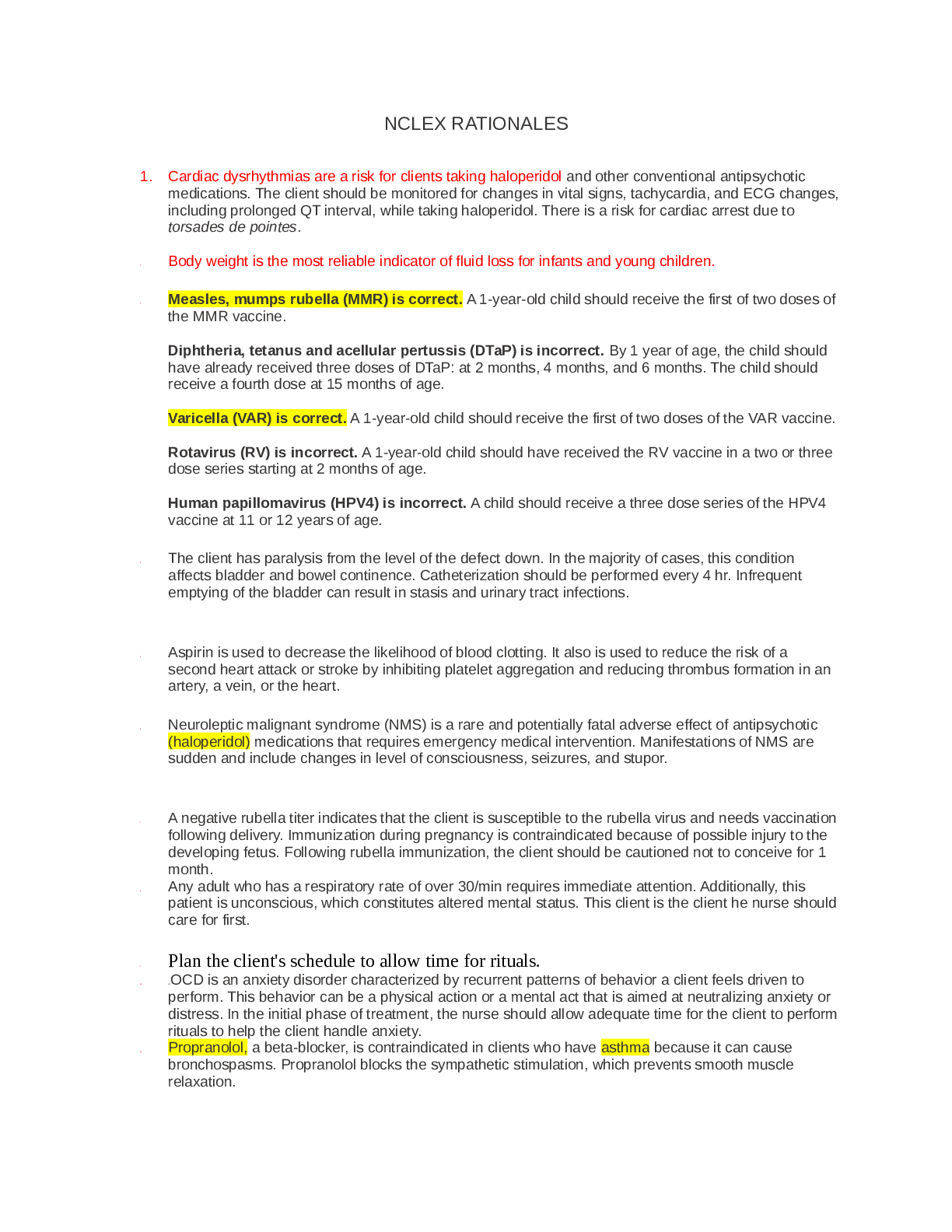
Reviews( 0 )
Document information
Connected school, study & course
About the document
Uploaded On
Apr 04, 2022
Number of pages
49
Written in
Additional information
This document has been written for:
Uploaded
Apr 04, 2022
Downloads
0
Views
73



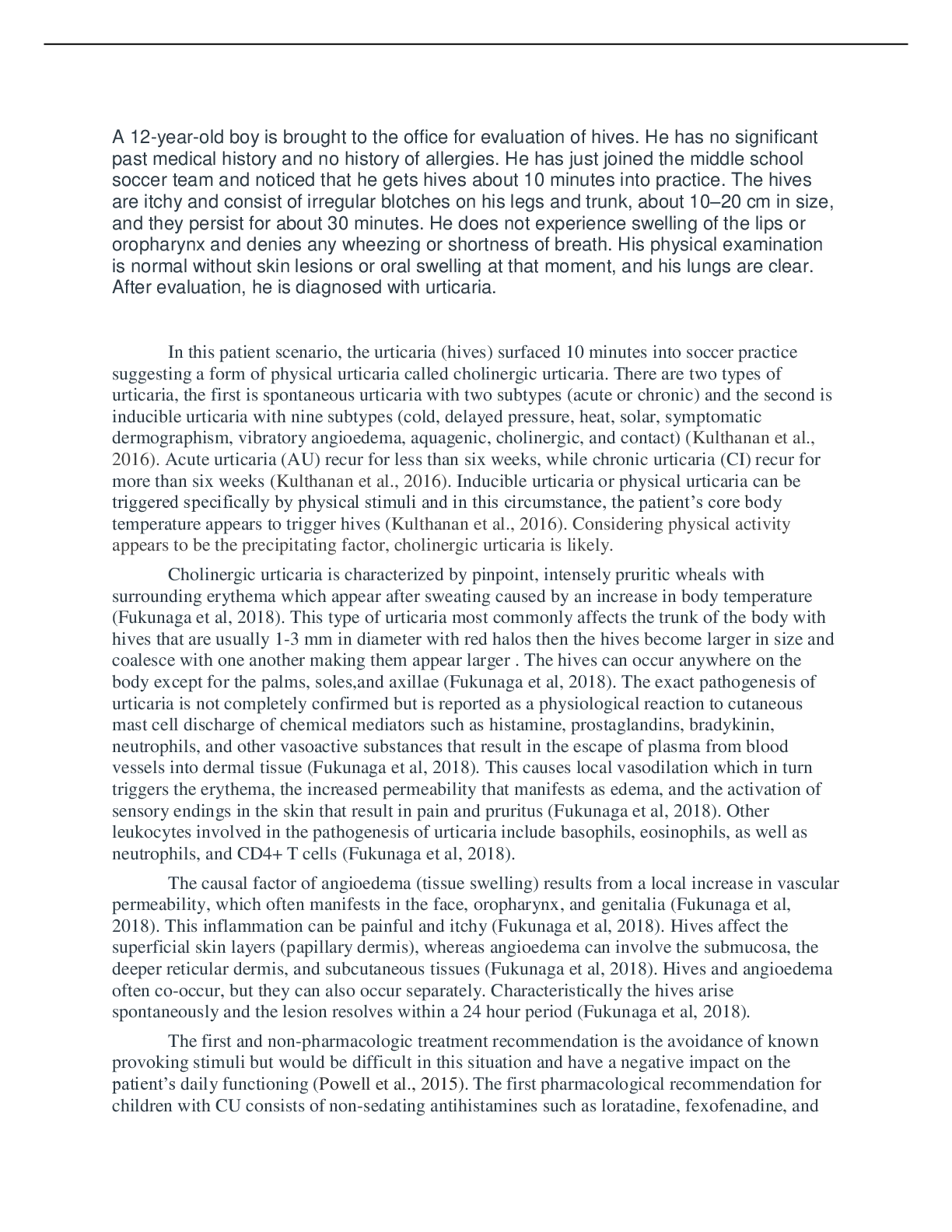
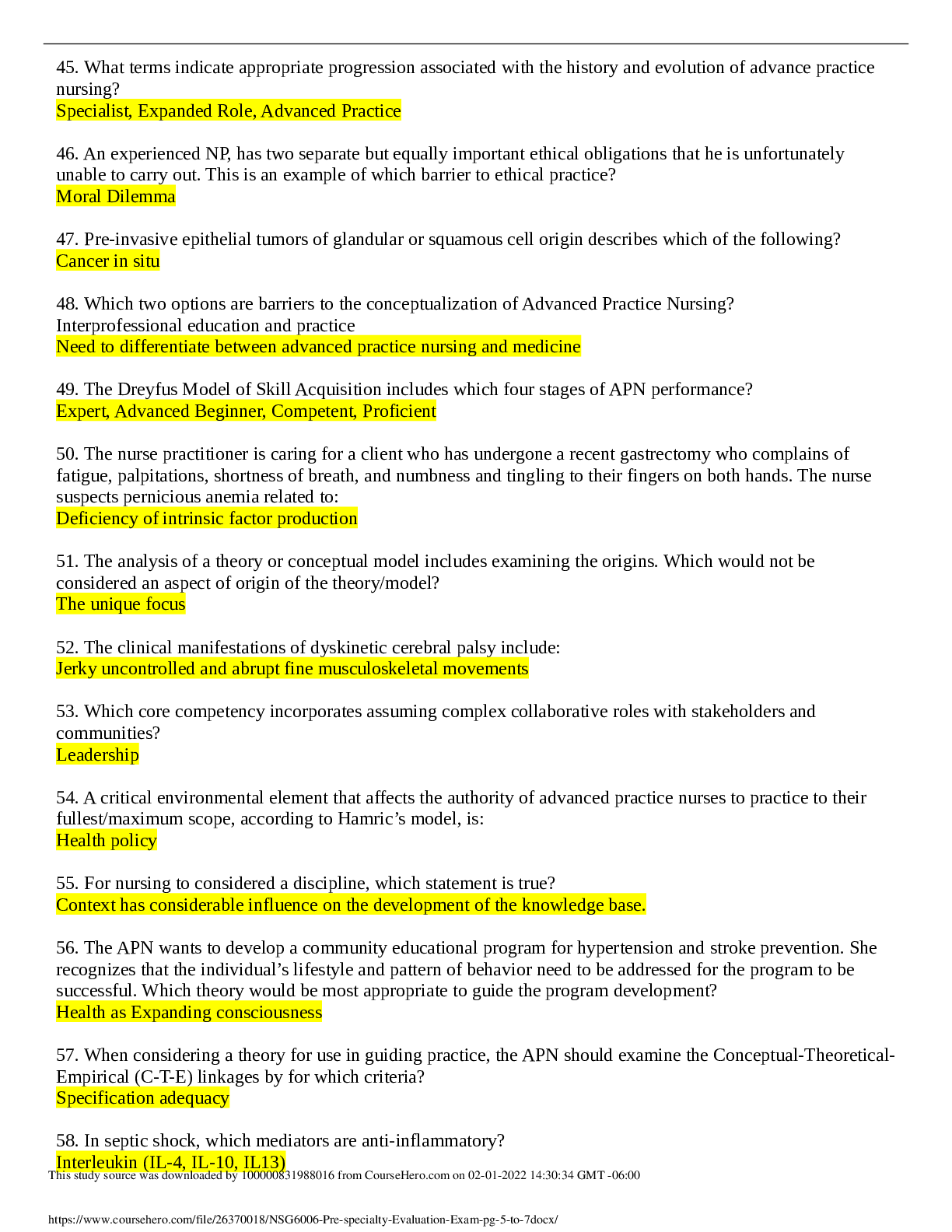





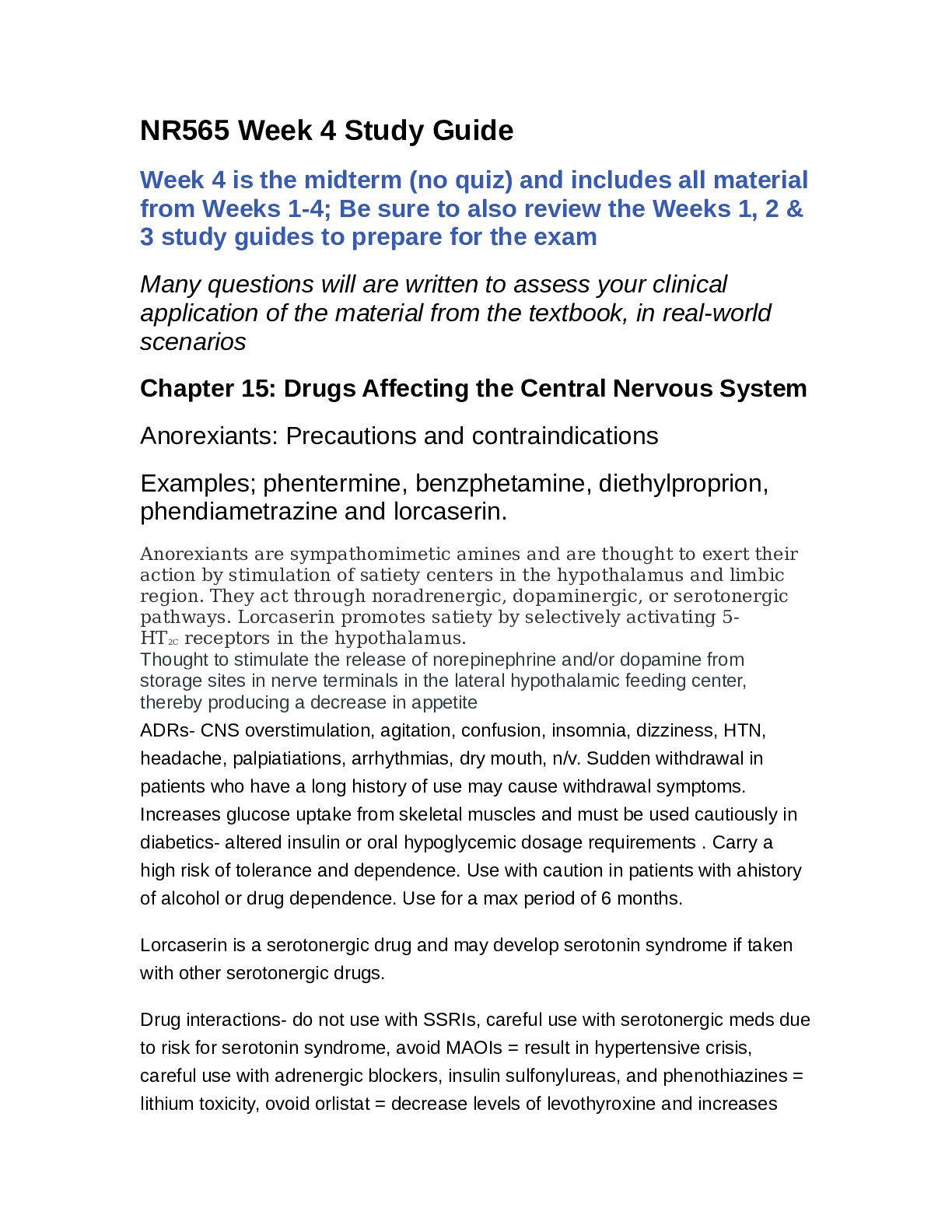
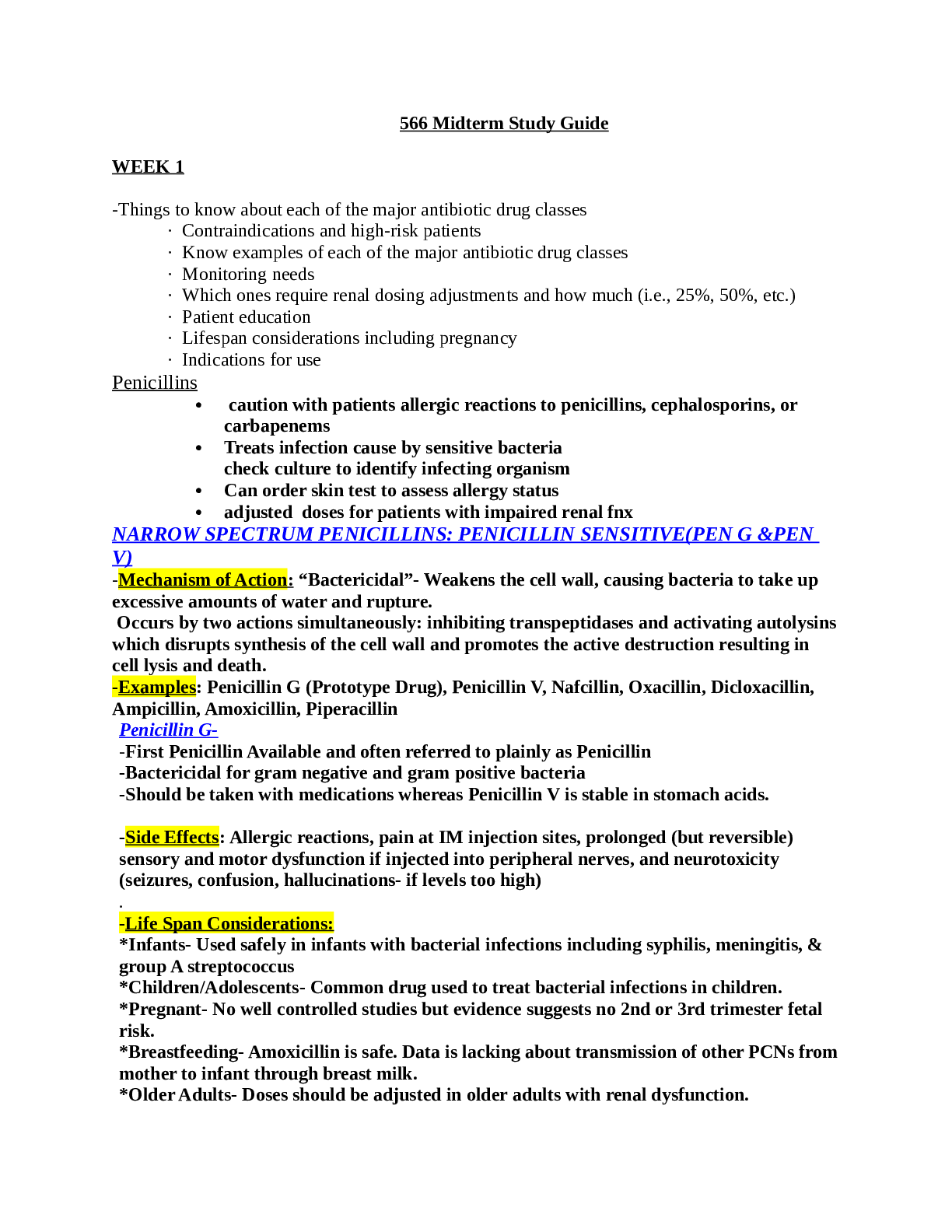


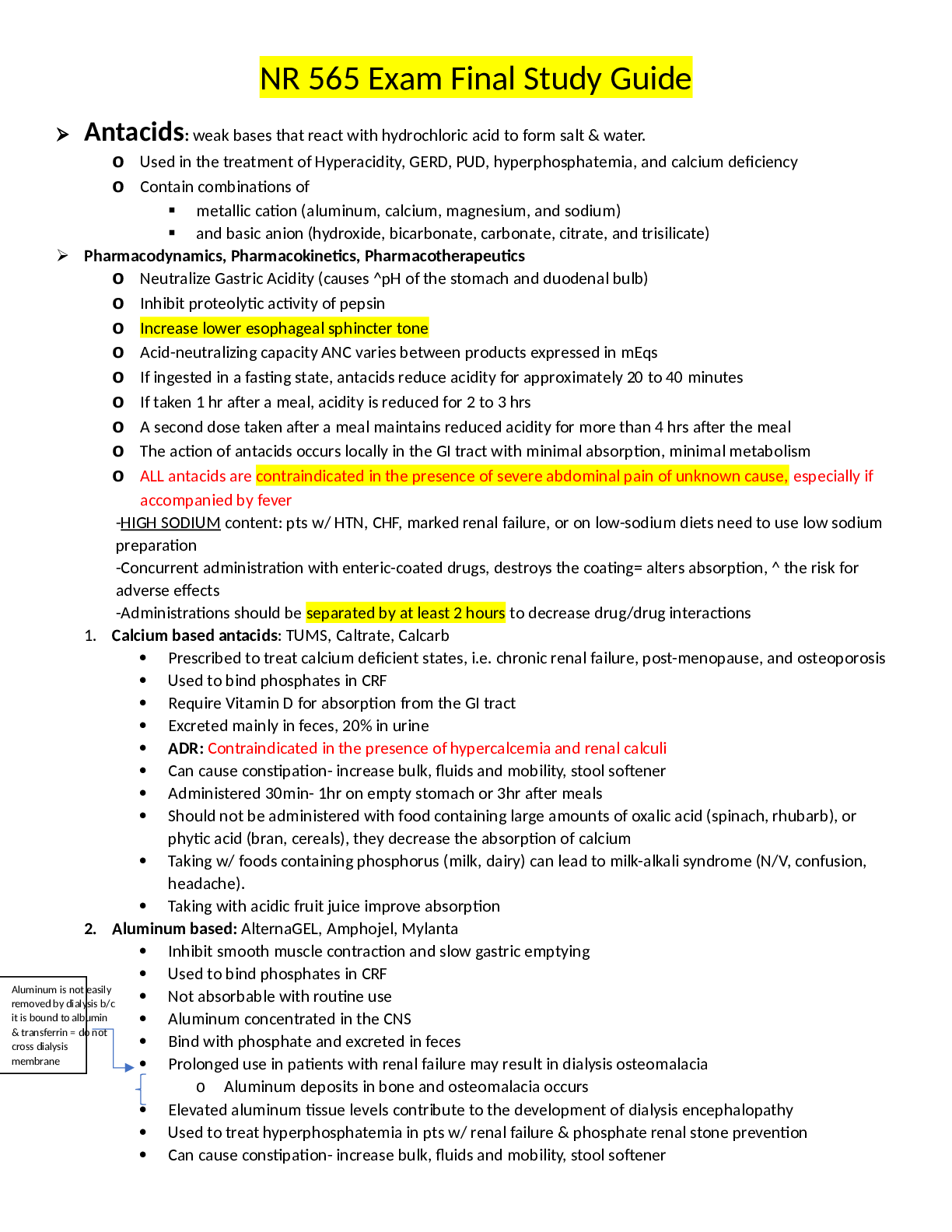








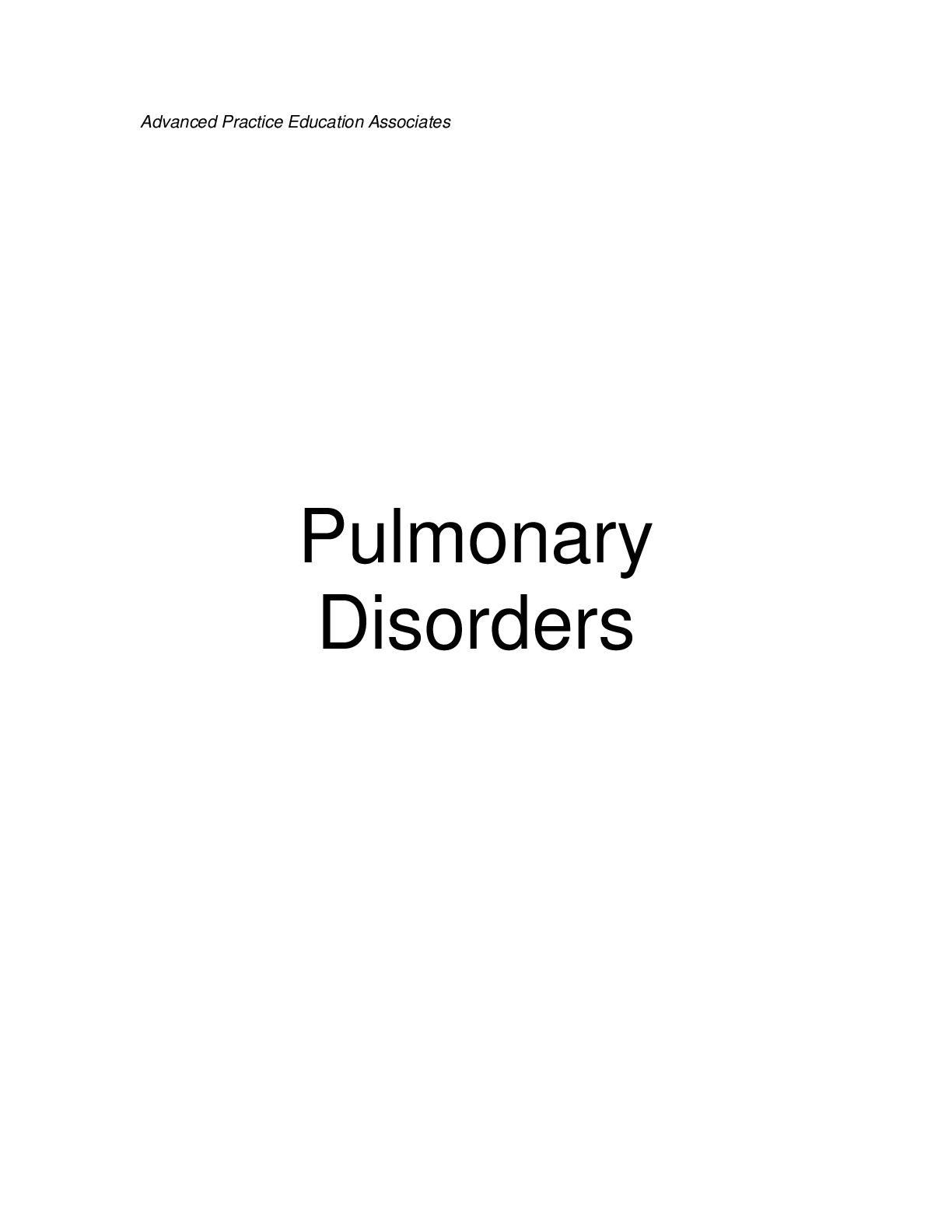
.png)





